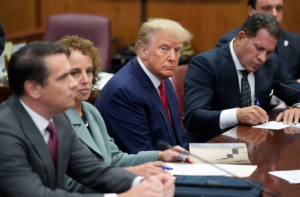COVID-19 pandemic has taught scientists a lot since it began in March last year. The ways in which the virus is transmitted has changed from time-to-time. We know now that surfaces aren’t the major cause, and disinfecting surfaces again and again is a misplaced use of time, energy and resources.
Scientists now believe that the disease is primarily airborne. That means virus mostly spreads through fine respiratory particles that remain suspended in the air for some time unlike larger droplets from coughing and sneezing that quickly fall on the ground.
United States ranks number one in the world in confirmed and active COVID-19 cases. There are more than 6.8 million active COVID cases in the country with 7-day average daily deaths at 746 currently.
Also Read: Hugs, tears as New Zealand-Australia travel bubble opens
A leading aerosol scientist from University of Colorado, Jose-Luis Jimenez said that outdoors are much better and safer than indoors
“Indoors are much more dangerous because the walls and the ceiling and the floor trap the air,” particularly if there’s low ventilation. Outdoors are much less risky because there is a lot more motion of air,” he told AFP.
But, he stressed, low risk doesn’t mean no risk. You can still catch COVID when exposed for a long time in a close proximity to carrier outdoors, for example when you are close to a smoker, chances are you will catch the virus fast.
There have now been a number of studies that have attempted to quantify the risk of outdoor COVID spread.
Irish times sought information from the government authorities on the 232,164 cases of COVID caught in the country till March 24 last month and found that 262 involved outdoor transmission, representing just 0.1 percent of the total, according to agency reports that said outdoor activities were involved.
Also Read: Almost every third person undergoing COVID-19 test in Delhi infected
Donald Milton, a professor at the University of Maryland said that one should avoid gathering outdoors in a crowd, especially if shouting is particularly involved and the air is stagnant. But he doesn’t think you need your mask on at all times.
“When I go jogging in my neighbourhood, where the houses are separated by 10 meters or more and there are only a few people out walking dogs or kids playing in yards, I carry a mask with me. I cannot run very far in warmer weather while wearing it. Then if I stop to chat with other people I can put it on. If I go walking with friends, I wear one,” he told AFP.
Mask wearing became a political issue in the United States early on in the pandemic. Liberals were generally more likely to take the virus seriously, and also saw masks outdoors as a way to signal solidarity with their community in a time of crisis
However Amesh Adalja, a public health expert at Johns Hopkins University, said its time to adopt a more nuanced approach better aligned with the science.
“Because masks have become so infused with politics, they have become something where people go around and ‘mask shame’ other individuals, and I think that’s counterproductive,” he said.
Also Read: Anthony Fauci predicts Johnson & Johnson vaccine clean chit
“We want people, who are unvaccinated especially, to wear masks when they’re in indoor situations when they cannot social distance.” But, Adalja thinks that it give a wrong impression to call outdoor risky, when indoors have much higher risk of exposure.
Some experts argue that the value of outdoor mask mandates is keeping the messaging simple enough for the public to understand, however, Adalja disagrees.






